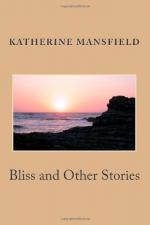|
This section contains 719 words (approx. 2 pages at 400 words per page) |

|
Post-World War I Art
In the aftermath of the devastation of World War I, artists expressed their shock at the horrors of war and their disillusionment with modern society. Art that emerged in the post-war period showed a marked departure from past forms as artists rejected traditional ways of expressing their ideas. For instance, James Joyce's novel Ulysses (1922) experimented with a stream-of-consciousness narrative. Poets often abandoned traditional rhyme and meter. Playwrights such as Bertolt Brecht saw the theater more as a classroom than as a place of performance. In his plays, characters would step out of their roles and directly address the audience.
The Bloomsbury Group
In the 1910s, and 1920s, London was a hubbub of literary and artistic activity. At the center of this activity was the Bloomsbury group, one of London's foremost intellectual and artistic circles. Members of this group rejected conventional ideas on religious, artistic...
|
This section contains 719 words (approx. 2 pages at 400 words per page) |

|




